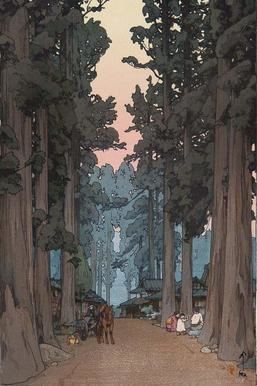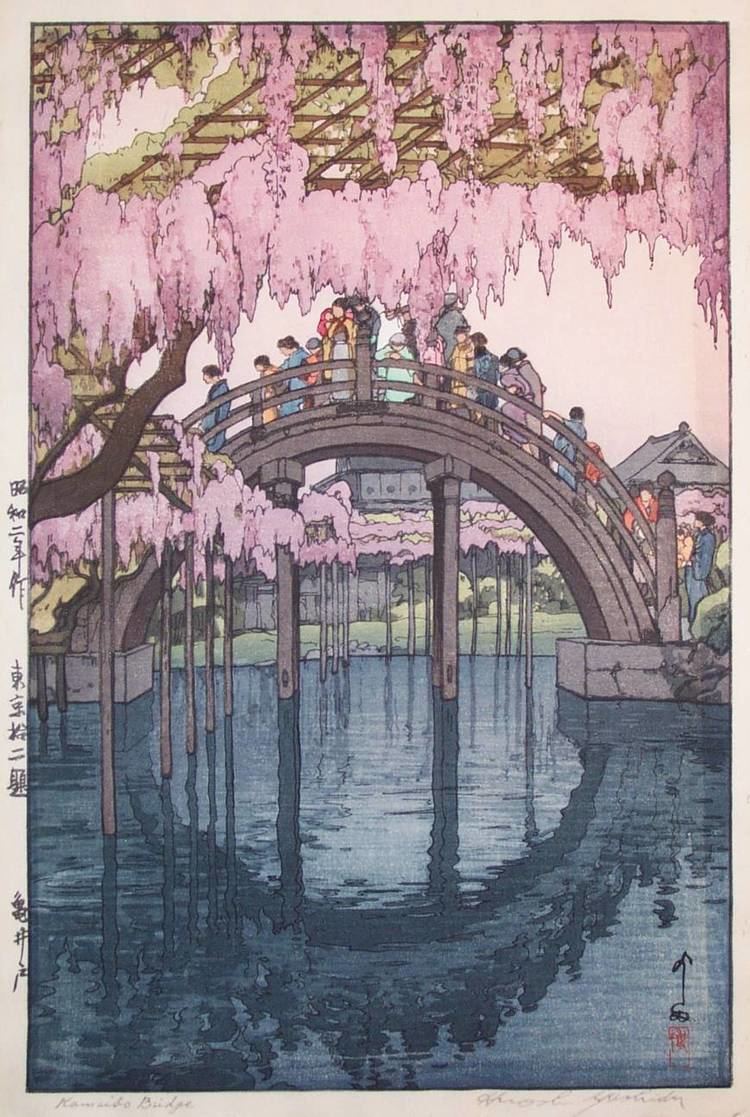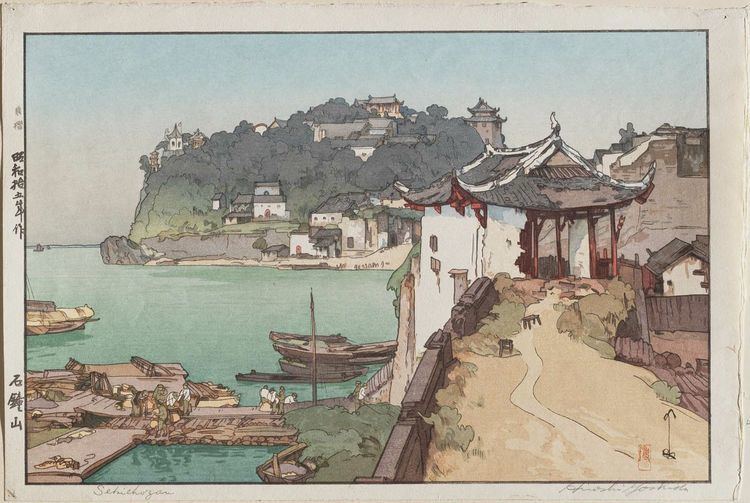Name Hiroshi Yoshida Periods Shin-hanga, Japanese art Children Hodaka Yoshida | Died April 1950, Tokyo, Japan Role Artist | |
 | ||
Artwork Garden in Summer, Fishes of Honolulu | ||
Hiroshi Yoshida: A collection of 278 works (HD)
Hiroshi Yoshida (吉田 博, Yoshida Hiroshi, September 19, 1876 – April 5, 1950) was a 20th-century Japanese painter and woodblock printmaker. He is regarded as one of the greatest artists of the shin-hanga style, and is noted especially for his excellent landscape prints. Yoshida travelled widely, and was particularly known for his images of non-Japanese subjects done in traditional Japanese woodblock style, including the Taj Mahal, the Swiss Alps, the Grand Canyon, and other National Parks in the United States.
Contents
- Hiroshi Yoshida A collection of 278 works HD
- Hiroshi yoshida 1876 1950 artelino
- Biography
- Artistic style
- The Yoshida family legacy
- Publications
- References

Hiroshi yoshida 1876 1950 artelino
Biography

Hiroshi Yoshida (born Hiroshi Ueda) was born in the city of Kurume, Fukuoka, in Kyushu, on September 19, 1876. He showed an early aptitude for art fostered by his adoptive father, a teacher of painting in the public schools. At age 19 he was sent to Kyoto to study under Tamura Shoryu, a well known teacher of western style painting. He then studied under Koyama Shotaro, in Tokyo, for another three years.

In 1899, Yoshida had his first American exhibition at Detroit Museum of Art (now Detroit Institute of Art). He then traveled to Boston, Washington, D.C., Providence and Europe. In 1920, Yoshida presented his first woodcut at the Watanabe Print Workshop, organized by Watanabe Shōzaburō (1885–1962), publisher and advocate of the shin-hanga movement. However, Yoshida's collaboration with Watanabe was short partly due to Watanabe's shop burning down because of the Great Kanto earthquake on September 1, 1923.

In 1925, he hired a group of professional carvers and printers, and established his own studio. Prints were made under his close supervision. Yoshida combined the ukiyo-e collaborative system with the sōsaku-hanga principle of "artist's prints", and formed a third school, separating himself from the shin-hanga and sōsaku-hanga movement.
Artistic style

Hiroshi Yoshida was trained in the Western oil painting tradition, which was adopted in Japan during the Meiji period. Yoshida often used the same blocks and varied the color to suggest different moods. The best example of such is Sailing Boats in 1921. Yoshida's extensive travel and acquaintance with Americans influenced his art considerably. In 1931 a series of prints depicting scenes from India, Pakistan, Afghanistan, and Singapore was published. Six of these were views of the Taj Mahal in different moods and colors.
The Yoshida family legacy

The artistic lineage of the Yoshida family of eight artists: Kasaburo Yoshida (1861–1894), whose wife Rui Yoshida was an artist; their daughter Fujio Yoshida (1887–1987); Hiroshi Yoshida (1876–1950), their adopted son, who married Fujio; Tōshi Yoshida (1911–1995), Hiroshi's son, whose wife Kiso Yoshida (1919–2005) was an artist; Hodaka Yoshida (1926–1995), another of Hiroshi's sons, whose wife Chizuko Yoshida (b. 1924) and daughter Ayomi Yoshida (b. 1958) are artists. This group, four men and four women spanning four generations, provides an interesting perspective in looking at Japanese history and art development in the turbulent 20th Century. Although they inherit the same tradition, the Yoshida family artists work in different styles with different sensibilities. Toshi Yoshida and the Yoshida family have used the original Hiroshi Yoshida woodblocks to create later versions, including posthumous, of Hiroshi Yoshida prints. Prints created under Hiroshi Yoshida's management with special care have a jizuri seal kanji stamp. The Hiroshi Yoshida signatures vary depending on the agents and time of creation. Hiroshi Yoshida prints sold originally in the Japanese market will not have a pencil signature or title in English.
Publications

Japanese Woodblock Printing, comprehensive guide to the craft of woodblock printing written by Hiroshi Yoshida was published by The Sanseido Company, Ltd. in Tokyo and Osaka in 1939.
